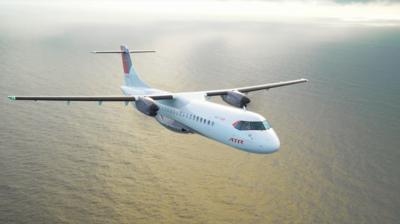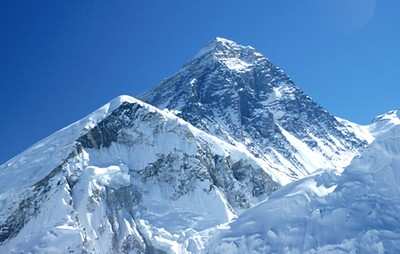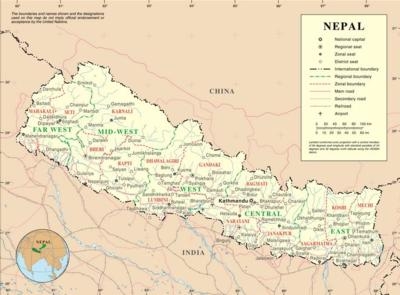A Surplus of Aftermath, a Dearth of Answers
Sixty-eight lives have been confirmed lost after an ATR-72-500 operated by Kathmandu-based Yeti Airlines went down in a gorge while attempting to land at a newly-opened airport in the resort town of Pokhara, Nepal. The instance occasions the Central Asian country’s deadliest aircraft accident in three decades.

In a statement released shortly after the 15 January 2023 tragedy, the Civil Aviation Authority of Nepal (CAAN), set forth that four of the downed aircraft’s occupants remain missing. The agency further reported that fifty-three of the ATR-72’s passengers were Nepalese, five were Indian, four were Russian, two were Korean, and four additional passengers hailed from Argentina, Australia, Ireland, and France respectively. The flight was crewed by two pilots and two flight attendants.
The accident’s cause is unknown and remains under investigation..
Looking on from the terrace of his home near the Pokhara airport, Mr. Gaurav Gurung, states he witnessed the ATR-72 spinning violently in the air before entering a steep, nose-down attitude (a description that conflicts with some of the video evidence) and crashing into the gorge. "The plane caught fire after the crash,” Mr. Gurung asserted. “There was smoke everywhere.”

Local resident Bishnu Tiwari, who rushed to the crash site near the Seti River to help search for survivors, reported rescue efforts were hampered by thick smoke and raging fire. Mr. Tiwari remarked: "The flames were so hot that we couldn't go near the wreckage. I heard a man crying for help, but because of the flames and smoke we couldn't help him.”
Rescuers at the accident-site—approximately 0.86-nautical-miles from the Pokhara International Airport (ICAO-VNPR)—combatted the flames with fire hoses and heaved ropes to remnants of the aircraft down-mountain from the main wreckage. Some bodies, burned beyond recognition, were carried by firefighters to hospitals, where grief stricken family members and friends had assembled to pass the bleakest of vigils. At Kathmandu airport, relatives of the downed aircraft’s passengers intermittently exchanged heated words with local officials as they waited for information pertaining to the crash and possible news of survivors.
Nepalese Prime Minister Pushpa Kamal Dahal rushed to Pokhara in the hours after the accident and promptly ordered the convening of a panel to investigate the mishap.
"The incident was tragic,” Prime Minister Dahal rued. “The full force of the Nepali army police has been deployed for rescue.”
The Yeti Airlines ATR 72 was bound from Nepal’s capital city of Kathmandu, to Pokhara, a flight of some 76-nautical-miles. According to the CAAN, the flight-crew last made contact with Pokhara from the vicinity of Seti Gorge—north of the city proper—at 10:50 NPT (UTC +5-hours 45-minutes).
Introduced in the 1980s by a French/Italian consortium comprising Aérospatiale (now Airbus) and Italian aviation conglomerate Aeritalia (now Leonardo S.p.A.), the ATR-72 family of twin-turboprop regional airliners has endured scrutiny in the wakes of numerous, high-profile accidents.
In 1994, an ATR-72-212 operating as American Eagle Flight 4184 from Indianapolis to Chicago was lost near Roselawn, Indiana after its flight-crew lingered too long in severe icing conditions. All 68 souls on board perished in a near perpendicular impact with the ground.
In July 2014, an ATR-72-500 operating as TransAsia Flight 222 crashed during approach to Penghu Airport (MZG) in Magong, a settlement on Penghu Island in the Taiwan Strait. The flight-crew intentionally descended the aircraft below the approach’s minimum descent altitude in foggy weather and struck a number of structures. Only ten of the aircraft’s 58 occupants survived.

In February 2015, an ATR-72-600 operating as TransAsia Flight 235 suffered an engine failure and crashed into the Keelung River shortly after departing Taipei Songshan Airport (TSA). Accident investigators determined the flight crew incorrectly identified the failed engine and erroneously shut down the operating one, thereby dooming the flight. Only 15 of the aircraft’s 58 occupants survived.
In 2018, an ATR 72 operating as Iran Aseman Airlines Flight 3704 crashed into Mount Dena in Iran’s Zagros Mountains. The Iranian Civil Aviation Organization (CAO), attributed the accident primarily to pilot error insomuch as the flight-crew elected to continue to Yasuj Airport (YES), the flight’s filed destination, despite deteriorating weather conditions. What’s more, the pilots purposefully descended below the approach’s minimum descent altitude. Ultimately, the aircraft entered an unrecoverable aerodynamic stall induced by mountain wave activity and went down, impacting the mountain some one-hundred-feet below its peak at an altitude of approximately 13,000-feet. The entirety of the flight’s sixty passengers and six crew-members perished.
Notwithstanding a family-wide record of a dozen fatal accidents, the ATR-72 is a soundly designed, robustly constructed aircraft. Cursory examination of the reports put forth following the aforementioned mishaps reveals few mechanical failures. Viewed through the lens of critical analysis, the ATR-72 appears a perfectly functional aircraft too often entrusted to inexperienced flight-crews.
Whether or not investigators of the 15 January Yeti Airlines Accident indict the ATR-72 remains to be seen. What can be stated with certainty, however, is that Nepal is a dangerous place to mess about in airplanes. The country is home to the tallest mountains in the Himalayan range and some of the world’s most remote and challenging runways. Owing to its unique geography; volatile, rapidly-changing weather; poor radar coverage and outdated air traffic control system; lackluster regulation, and lack of investment in aviation infrastructure, Nepal has been, and for the foreseeable future will remain, a challenge to pilots and aircraft operators.
Global regulators have taken notice of Nepal’s lack of civil aviation infrastructure and recalcitrance to innovate or modernize. Ergo, the European Commission—the EU’s executive cabinet—has banned upwards of twenty Nepali air-carriers, including Yeti Airlines, prohibiting them from operating in Europe on account of safety concerns.
 Unfortunate... ANN/SportPlane Resource Guide Adds To Cautionary Advisories
Unfortunate... ANN/SportPlane Resource Guide Adds To Cautionary Advisories ANN FAQ: Turn On Post Notifications
ANN FAQ: Turn On Post Notifications ANN's Daily Aero-Term (04.29.24): Visual Approach Slope Indicator (VASI)
ANN's Daily Aero-Term (04.29.24): Visual Approach Slope Indicator (VASI) ANN's Daily Aero-Term (04.28.24): Airport Marking Aids
ANN's Daily Aero-Term (04.28.24): Airport Marking Aids ANN's Daily Aero-Linx (04.28.24)
ANN's Daily Aero-Linx (04.28.24)





